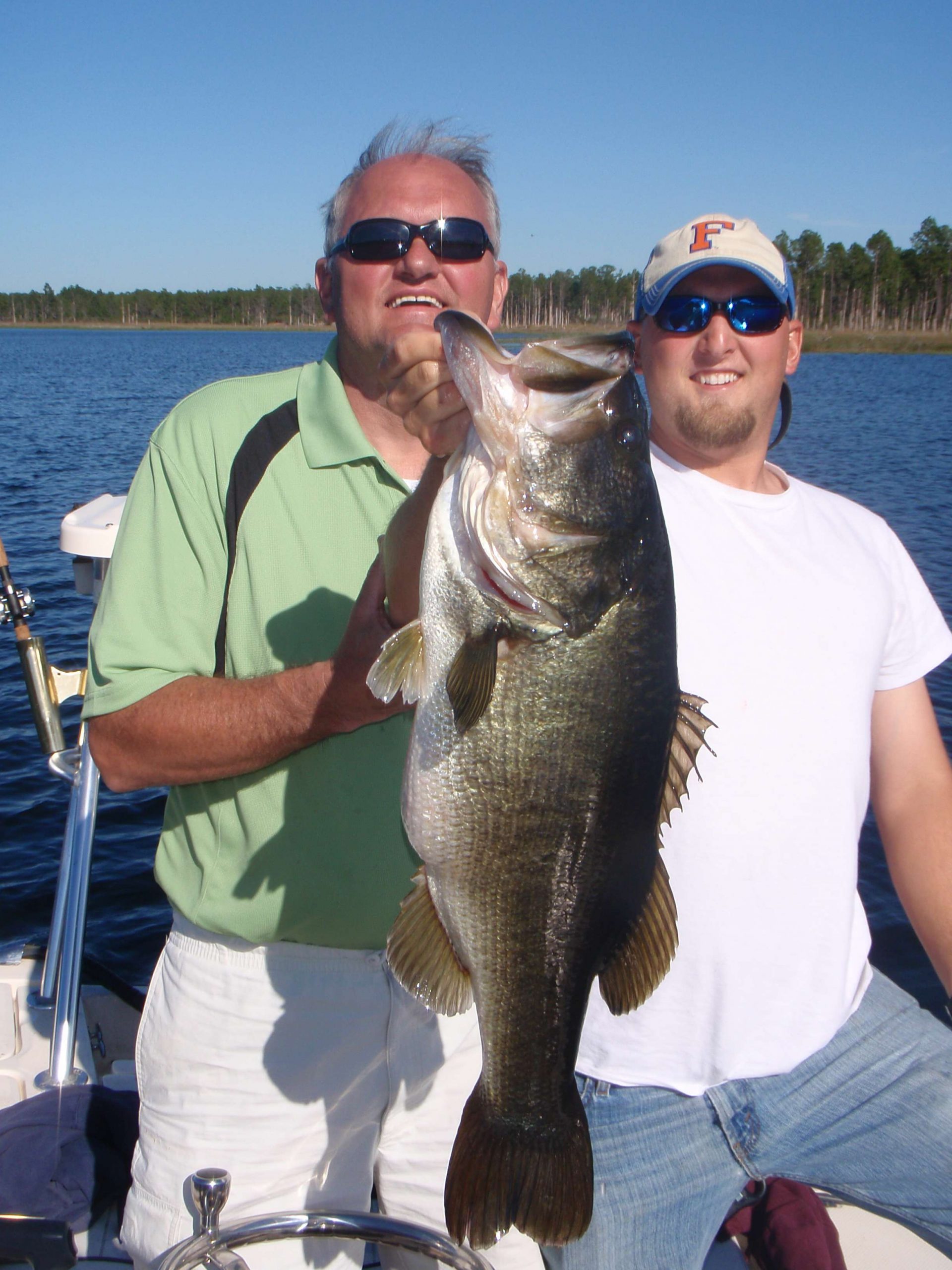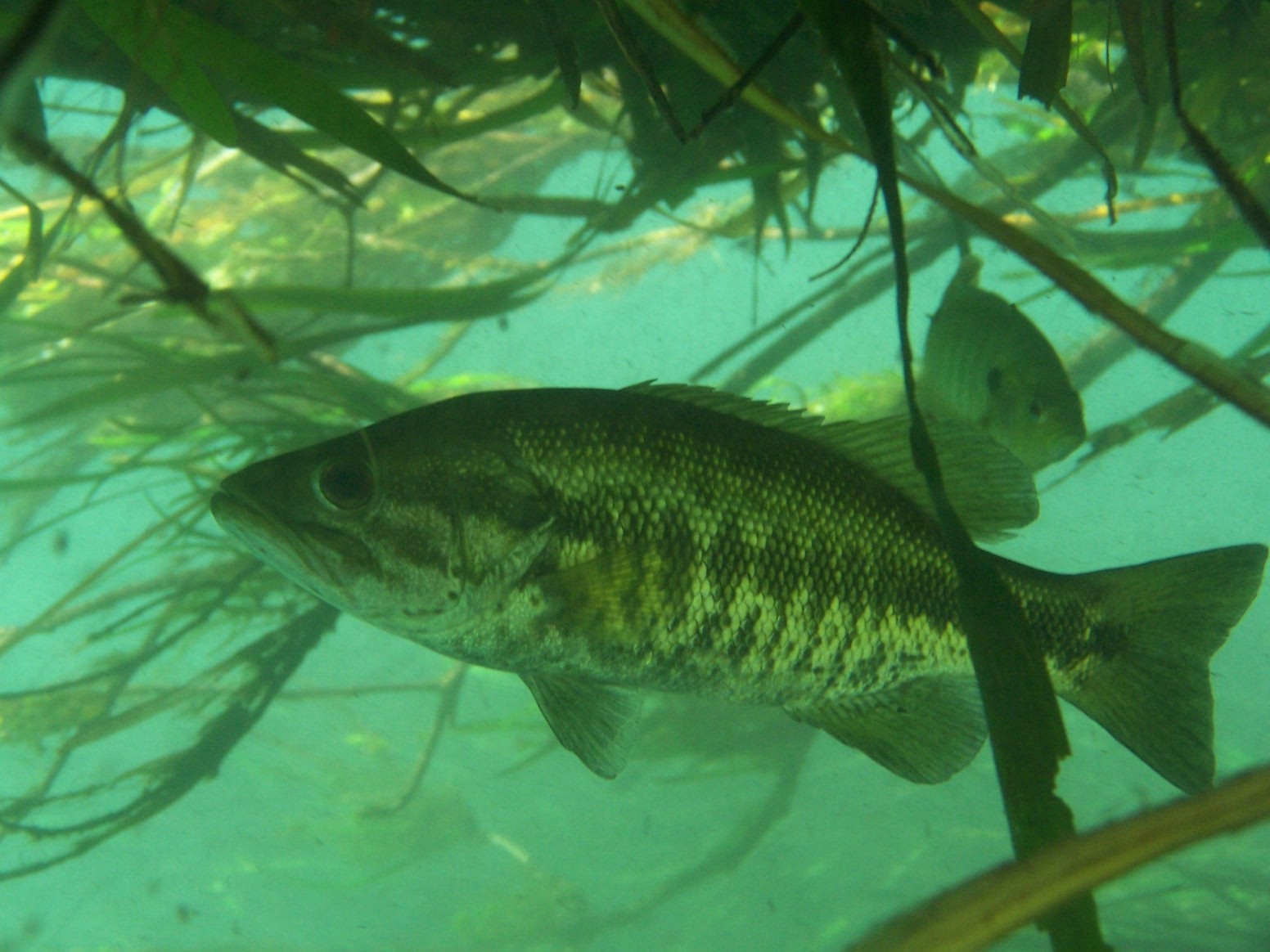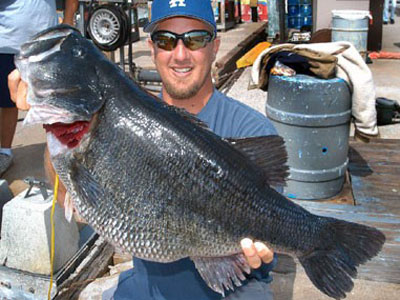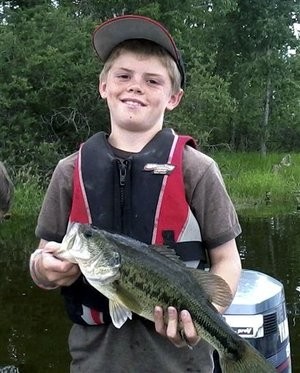
When an angler can see a large bass, but just can’t entice it to bite, he often rationalizes the failure by saying, “Well, it didn’t get that big by being dumb.”
He isn’t talking about size, though. He’s implying that the bass gained wisdom through age.
In other words: “Big” equals “old.”
But in the world of bass, “big” does not equal “old.” In Florida, scientists used otoliths (ear bones) to determine that a 10-pound-plus largemouth was just 4 years old.
By contrast, an angler recently caught and released a 3.5-pound bass in Montana that was judged to be 19 years old, based on a tag inserted 14 years ago, when it weighed 1.5 pounds.
So, a 4-pound bass in Minnesota or Montana might not be impressive in terms of weight, but it could be a real trophy if age is given equal consideration.
Does that mean that bass fisheries in northern waters should be subject to stricter regulations to protect a vulnerable, slow-growing population?
Not necessarily.
That same 4-pound bass could be 6 or 7 years old, instead of 18 or 19. Just as not all Southern bass grow to 10 pounds, not all Northern bass live to 19.
“Very old fish are rarities, just like human beings who live to be more than 100 years old,” said Roy Heidinger, who, before his retirement, studied age and growth in bass for years at Southern Illinois University.
“These old fish are not the bulk of the sport fishery.”
In a Florida study, 822 trophy bass (10 pounds and up) given to taxidermists showed a mean age of 9.7 years. That’s a growth rate of about a pound a year. As previously mentioned, the youngest was just 4 years old, while the oldest, likely from the northern part of the state, was 16.5.
Bass grow large and/or live long because of a variety of variables, including genetics; forage species and abundance; climate and latitude; and type of fishery, its water quality, and habitat. Fish in more northern climates typically live longer, but grow slower and don’t get as big as their counterparts in the South, especially Florida strain bass.

Genetics limit growth of Suwannee River bass to under five pounds.
Also, whether in the North or the South, bass tend to grow their entire lives. Rate of growth slows as the fish age but never stops.
Forage
For maximum growth, a bass must have available and abundant forage of the right size for each stage of its life, said Gene Gilliland, Oklahoma’s assistant chief of fisheries.
“In lakes with high recruitment, unless they are extremely fertile with lots of forage, you’re going to have slow growth because there are too many mouths to feed,” he explained.
A shad diet is better for growth than bluegill, added Wes Porak of Florida’s Fish and Wildlife Research Institute. That’s because shad have higher energy content or “bioenergetic” value.
In other words, bass get more bang for the buck with shad, especially threadfin, for biological maintenance (digestion, metabolism, and activity costs), body growth, and reproduction.
Trout are even better, according to Steve Pagliughi, a consulting fisheries biologist. Writing in the September/October issue of Bassmaster Magazine, he explained how a bass, nicknamed “Dottie,” grew to world-record proportions — 25.10 pounds — before it died in 2008.

Jeb Dickerson with Dottie when she weighed 21-11, just 9 ounces off the world record.
“Take trout out of the equation, and there’s no doubt this fish would not have weighed anywhere near 25 pounds,” he said. “Lake Dixon has been stocked for many years with large numbers of hatchery trout . . .
“Trout have high levels of lipids and protein when compared to more traditional prey.”
By contrast, crawfish aren’t nearly as nutritious. Much of their weight is mostly indigestible shells.
“It’s not just the forage, but how easy it is to capture,” said Porak. “Is it schooling? Can it be ambushed (with little expenditure of energy)? Threadfin and silversides in open water require higher energy to catch.”
Additionally, the scientist said, laboratory observations have revealed that prey capture efficiency declines when plants reach “excessive levels.” That means growth slows as well.
Climate and Latitude
Along with forage, these two variables are of paramount importance in determining how quickly bass will grow and how long they will live.
Climate generally is consistent, but ever-changing seasonally. A warm fall can extend feeding — and growth — in the North. A cold spring can prolong winter lethargy in the Mid-South. Sometimes, these patterns are cyclical for a few years or possibly a decade or more.
“It’s not a North-South thing,” Gilliland said. “It doesn’t directly relate to latitude. The growing season in western Oklahoma, for example, is shorter than in the East. Weather moves through on a diagonal.”
Latitude, meanwhile, determines more fixed influences, such as length of days and nights, as well as intensity of the sun. Since it moves toward the south in winter, waters there remain warmer and more conducive for growth during that season.
That’s not to say that bass don’t feed during winter in the North. Anglers sometimes catch them through the ice. Eating for these fish, however, is about fueling their metabolisms so they can sustain themselves in cold water, not about growth.
But water also can be too warm for maximum growth, cautioned Porak. “Above 80 degrees, growth declines,” he said.
Other Factors
A host of other variables can influence bass growth and longevity, with many relating directly or indirectly to the bass/forage connection.
For example, stained water, usually an indication of high fertility, suggests abundant food. But it’s more complicated than that.
“In turbid water, you are not going to have vegetation and that means no nursery cover, so you’ll have fewer bass,” Gilliland said. “Lower density means you can have fast growth rates.”
But water that is too off-color can impede vision and thus make feeding more difficult. Fertile systems also are more likely to have carp and gizzard shad. When a fishery’s carrying capacity is dominated by rough fish, growth slows down for bass and other game species.
By contrast, clearer water is conducive to vegetation, which is good for forage species such as bluegill and minnows.
“Take out the plants and you lose that forage. You change the ecosystem,” Porak said. “Plants affect what type of prey is available.”
The Florida biologist added that low oxygen levels also can slow growth, as it forces the fish themselves to slow down.
Generally, though, both oxygen and pH (acidity or alkalinity of the water) in healthy fisheries are within a range that bass have evolved to tolerate and, consequently, they do not significantly affect growth.
River and Coastal Bass
Most every angler knows that bass in rivers and tidal waters do not grow as large as fish found inland. But why?
For rivers, it’s mostly about flow.
“Productivity in a static body of water (lake or reservoir) is easier to maintain. You’re more likely to have abundant food in static water,” said Oklahoma fisheries biologist Gene Gilliland.
“In flowing water, you don’t have as many (food) options, and fish can’t get as many calories from insects and crawfish.”
Also, he added, river fish “exercise” constantly, burning calories to maintain position in the water column and fighting currents to feed.
Tidal bass, meanwhile, have evolved in a different environment in terms of flow, salinity, and forage base. Their diet usually is dominated by less nutritious invertebrates.
“Estuaries can be productive, but bass can’t take advantage as well (as other species),” Gilliland added. “Currents are moving in and out, which means more exercise, and bass must spend more energy in maintaining their internal salt balance. They use more calories just making things work and have fewer to go into growth.”
Dennis DeVries of Auburn has studied coastal bass for years in the Mobile-Tensaw Delta.
“We found that these fish move hardly at all, even in downstream areas where salinity increased in the summer, sometimes to high levels,” he said. “The fish just remained in those areas until salinity decreased again.”
He added that coastal bass seem to spawn earlier in life, but not live as long.
“They are shorter and stubbier,” Florida biologist Wes Porak said. “They’re not necessarily different genetically, but they’ve evolved in unusual conditions.”
The Oldest Largemouth Bass
When 10-year-old Garrett Frost caught and released a Montana bass that weighed 3.5 pounds earlier this summer, many thought that it might be the oldest largemouth on record.
A tag that it carried allowed resource managers to determine that it was 19 years old.

Garrett Frost and the bass believed to be almost twice as old as him.
But a 6.78-pound bass caught in New York’s Mariaville Lake still owns that honor. Back in 1992, biologists used otolith rings to determine that the fish was at least 23 years old, and it was in good condition, meaning that it could have lived longer.
The fish was kept by angler Mark Lenegar after he caught it for the third time in one day and noted that it was bleeding around the tail.
Until that catch, the oldest bass reported in literature was age 18, but estimations before the early 1980s were based on scale rings, a method not nearly as accurate as using otoliths.
In a press release related to Lenegar’s catch, Cornell University’s Warmwater Fisheries Unit said that most bass populations in New York “have individuals reaching age 15.”
It also reported that a 12-year study, using scales, “judged three bass to be age 18 and eight to be age 17 out of nearly 18,000 largemouth bass examined.”
By contrast, anglers have entered more than 500 bass in Texas’ ShareLunker program, but fisheries manager Dave Terre said that the oldest fish that he has seen was 12 years old.
“And it was not a trophy size bass,” he added. “It was a 6-pound male, which is huge for a male bass.”
Genetics
In Florida, biologists took two 6-year-old bass from Lake Kissimmee. One weighed more than 8 pounds, the other just 14 ounces.
How can such a growth difference exist in the same fishery? Possibilities include disease, habitat/forage choices, and even how early in the year the fish were spawned.
Genetics could factor in as well. Some bass are genetically disposed to grow larger than others.
Right now, Texas Parks and Wildlife biologists are trying to harness that biological truth to create an entire population of bass blessed with great growth genes.
In 2005 and 2006, they stocked bass from ShareLunker parents in seven reservoirs as part of the Operation World Record Program. In other words, the females used were 13-pound-plus bass, while males were offspring of equally large ShareLunker entries.
“Texas Parks and Wildlife recognizes genetics as one of the factors important for growth of trophy bass — at least in Texas,” said Dave Terre, chief of management and research for Inland Fisheries. “We’re assuming these fish are genetically unique. What that means exactly, we don’t know. But we’re trying to maximize those traits.”
After four years, researchers found that the stocked bass from ShareLunker parents were a half-pound heavier than resident fish of equal age.
“We’re going to keep monitoring those fish,” Terre said. “They’re tagged and, with DNA fingerprinting, we know the parents of each of them.
“We have reason to believe that these bass possess unique genetic characteristics that enable them to grow larger. The ultimate test will be down the road, about six years into the program.”

